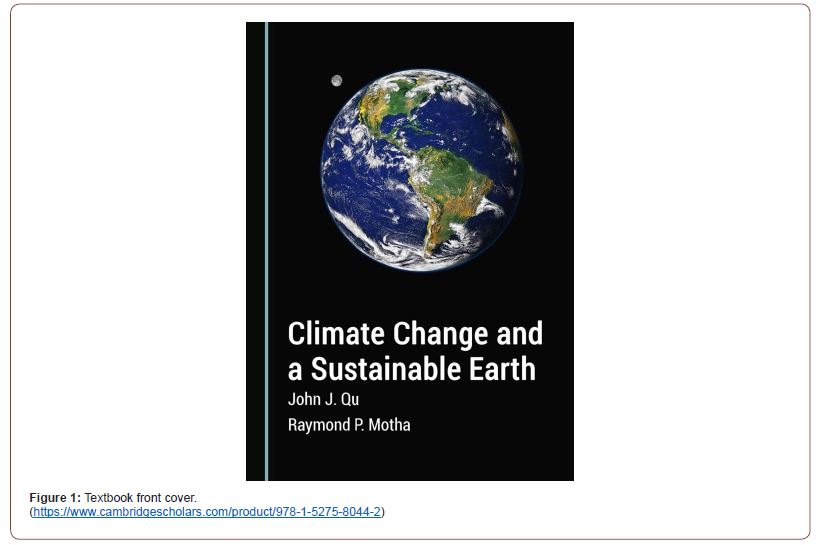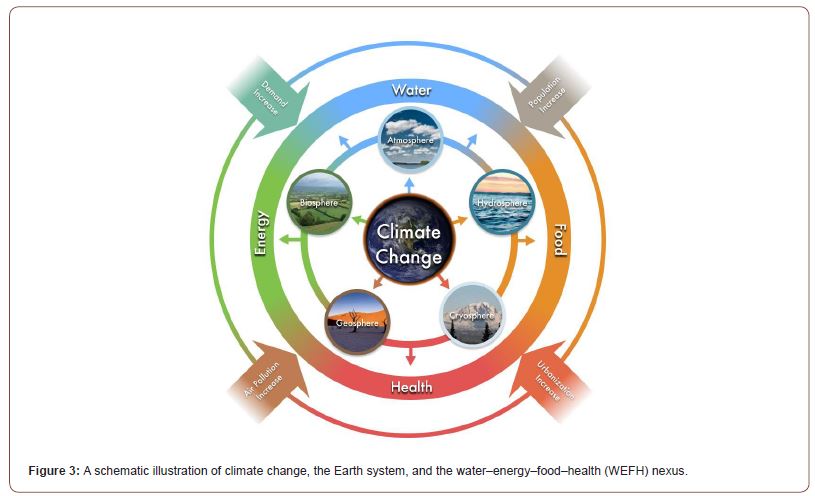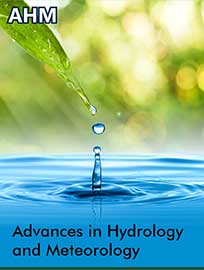 Mini Review
Mini Review
Educating the Next Generation on Climate Change and Sustainability
John J Qu1,2,3*, and Raymond P Motha1
1Global Environmental and Natural Resource Institute (GENRI), George Mason University, USA
2Department of Geography and Geoinformation Science (GGS), George Mason University, USA
3College of Science, Institute for a Sustainable Earth, George Mason University, USA
John J Qu, Global Environmental and Natural Resource Institute (GENRI), Department of Geography and Geoinformation Science (GGS), College of Science, Institute for a Sustainable Earth, George Mason University, USA.
Received Date: April 07, 2022; Published Date: April 25, 2022
Review
The impact of changing climate on natural resources is among the greatest challenges that currently threaten Earth. It is critical to educate the next generation of society on these impacts that endanger the sustainability of natural resources in the Earth system. A new textbook entitled “Climate Change and a Sustainable Earth” was published by Cambridge Scholars Publishing on March 2022 (see Figure 1). The recently published textbook reviews the basic scientific principles of climate change as they relate to the environment, natural and human resources. At the heart of this textbook is the lesson that our planet does not work solely as a physical system, but rather as a linked biological and physical system. This has always been true, beginning with the origin of life with blue-green bacteria oxygenating the atmosphere and making higher life-forms possible. It is even truer today, with a multiplicity of living systems, from oceans to rainforests and even humanmodified ones like agroecosystems, all affecting the environment locally and globally [1]. We are truly saddened by the passing of Dr. Lovejoy on 25 December 2021. Dr. Lovejoy was, a Distinguished University Professor of Environmental Science and Policy, the founding Scientific Director of the Institute for a Sustainable Earth at George Mason University. He also was a world-renowned expert in the field of environmental science and lifetime climate crusader. In fact, he has been referred to as “the Father of Biodiversity”. He provided inspiration, encouragement, and support to the authors of this textbook. We are gratefully indebted to this compassionate scientist (Figure 1,2).


Figure 3 illustrates the five spheres that make up the Earth system, namely the atmosphere, hydrosphere, cryosphere, biosphere, and geosphere. The problems posed by climate change directly affect the first four spheres on a wide range of temporal and spatial scales Qu JJ and Motha RP [2]. Climate change does impact the geosphere as well, but the effects of the Earth’s climate on this sphere generally evolve over long periods of time and are beyond the scope of this book. Using a multidisciplinary approach, the book combines the principles of changing climate with specialized fields of the Water-Energy-Food-Health (WEFH) Nexus to examine how the Earth operates as an integrated system (Figure 3).

The textbook is divided into four main sections. The first section is a review of the fundamentals of climate and its changing state. This includes the basic concepts involved in climate observations, trends, extreme events, and climate change indicators. It also examines the physical principles and global teleconnections that define the climate problem. The purpose of this section is to highlight important themes related to local, regional, and global impacts of climate change on the Earth system. The second section reviews the Earth system and its components. Each of these spheres has both common and unique features that are vulnerable to climate change. The third section then delves into climate change impacts on the sustainability of natural resources and human health, which is vulnerable to resource availability and utilization. Climate change has significant consequences on the WEFH sectors of society. The crucial aspects of sustainability under changing climate conditions are discussed in this section. These sectors of society can be seen as interconnected through climate and resource sustainability when viewed from a holistic, or nexus, approach. Finally, this book examines the future challenges and opportunities that satellite applications and innovative technologies, such as artificial intelligence and machine learning, offer to mitigate the impact of climate change on the Earth system and to develop adaptation strategies for a sustainable future.
This textbook can be used as an introductory level course at both college graduate and undergraduate levels, and in advanced science programs at the high school level. It can also be used as a scientific reference book. This textbook is tailored generally to students who are enrolled in a range of multidisciplinary science programs, including environmental science, hydrology, biology and ecosystems, energy and agricultural sciences, and natural resource management. It also can be an elective for students in liberal arts, socioeconomics, and educational course programs of study to enhance their knowledge base.
This textbook is intended to broaden the academic program of studies for a wide range of students because of the multidisciplinary nature of climate change impacts on society. Climate change issues are in the public news frequently. We believe that there is a greater need to provide academic program courses to a wide student audience with the aim of enhancing knowledge of the issues, exposing students to the challenges that face them, and promoting greater opportunities to meet these challenges. A brief summary of learning objectives of this textbook includes the following.
1. Explain climate change and the impacts on the Earth system.
2. Describe the water-energy-food health nexus.
3. Discuss global teleconnections and their impacts on climate change.
4. Explain atmospheric aerosols and their influence on climate change.
5. Describe how drainage basins play a key role in the stability of the climate system.
6. Describe the cryosphere and its impact on Earth’s climate.
7. Discuss the biogeochemical cycles and how climate may have significant impacts.
8. Explain the soil-ecosystem-carbon-climate nexus.
9. Describe the relationship between climate change and the global water crisis.
10. Discuss climate change impacts on sustainable energy.
11. Describe the importance of microclimate to agriculture.
12. Discuss the consequences of climate on human health,
13. Describe a framework for managing nexus interactions to sustain the Earth system.
14. Discuss innovative technologies for future sustainable development.
There are numerous textbooks that provide extensive details of climate change principles and impacts of specific sectors of society. This textbook focuses on the causes and effects of climate change on the sustainability of the Earth system. The impacts of climate change on the Earth’s interlinked natural resources as well as on human health concerns are crucial to a sustainable future. This textbook examines climate change issues affecting the Earth system from a holistic natural resource perspective and illustrates unique and unintended consequences on socio-economic sectors of society. The aim is to help address natural resource security and future sustainable development.
Acknowledgement
None.
Conflict of Interest
No conflict of interest.
References
- Lovejoy TE (2022) Foreword, Climate Change, and a Sustainable Earth. In: Qu JJ and Motha RP (eds), Cambridge Scholars Publishing, ISBN13: 978-1-5275-8044-2.
- Qu JJ, Motha RP (2022) Climate Change and a Sustainable Earth. Cambridge Scholars Publishing, ISBN13: 978-1-5275-8044-2.
-
John J Qu, Raymond P Motha. Educating the Next Generation on Climate Change and Sustainability. Adv in Hydro & Meteorol. 1(2): 2022. AHM.MS.ID.000508.
-
Water transfer, Water supply, Water storage, Domestic, Industrial, Rainfall, Climate, Reservoirs
-

This work is licensed under a Creative Commons Attribution-NonCommercial 4.0 International License.






